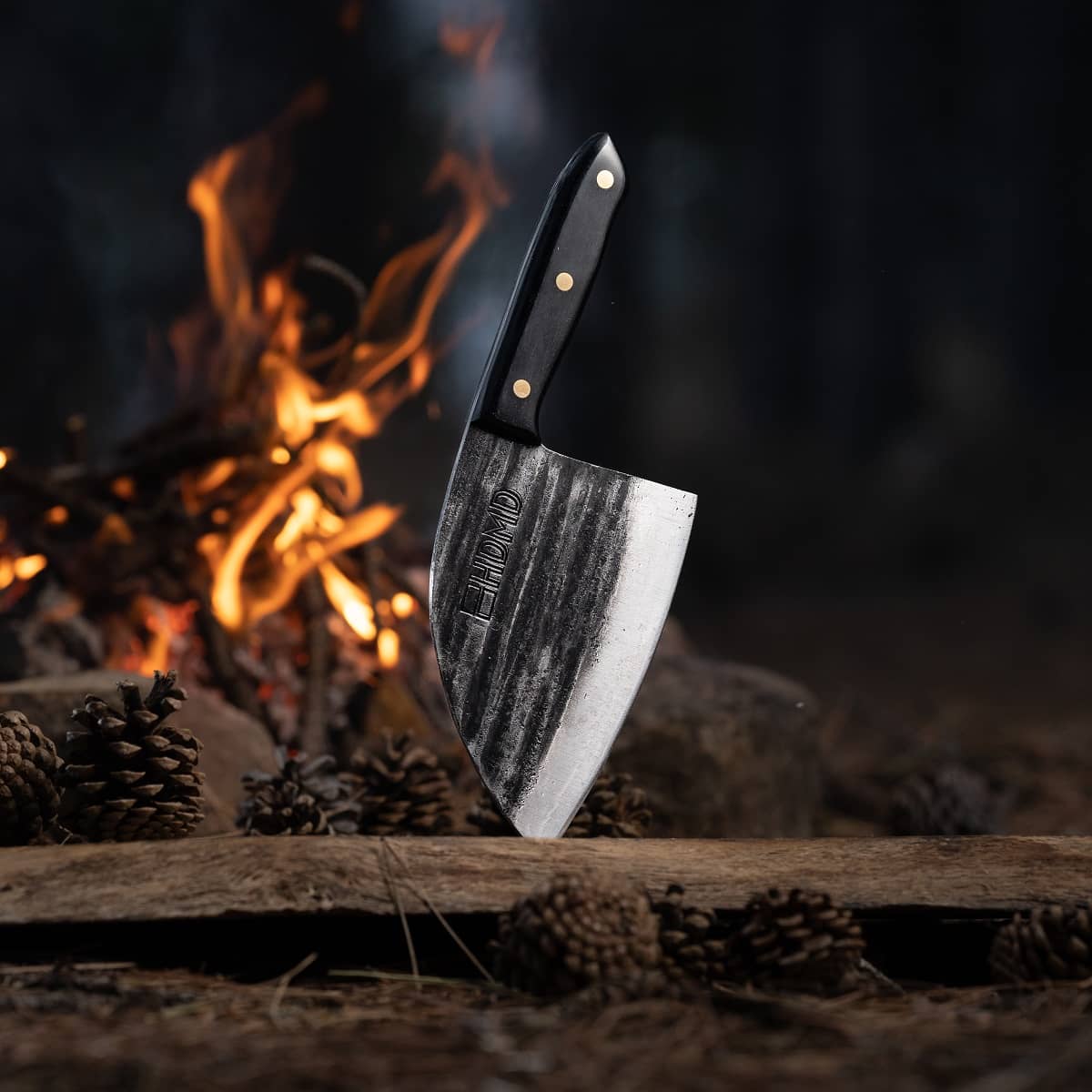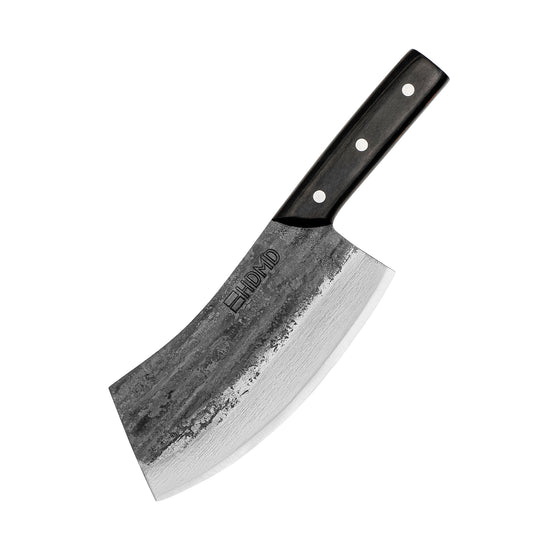French Onion soup is a foundation recipe for many accomplished chefs or home cooks. Not only is it a celebration of frugality, but its earthy, warming flavors are a showcase of cooking techniques and crowd-pleasing cuisine.
Cutting onions for French Onion soup is a simple matter on the surface of cutting your onions end to end or ‘pole to pole,’ but let’s go more in-depth with this topic!
From selecting the best onions to plating up your soup, we’ve covered it all. You’ll find super information on cutting techniques, hacks, and tips that explain the savory wonder of the French Onion soup.
How to choose the best onions for your soup
The best onions for French Onion soup are the widely available and inexpensive yellow onions. This onion offers frugal shopping and a milder, semi-sweet flavor that gives depth to French Onion soup broth. It holds together well during the slicing and cooking process and caramelizes beautifully with time and patience.
What are you looking for in a great yellow onion? Here are some purchasing pointers:
- A good yellow onion will be heavy for its size
- Firm flesh, without bruising
- No wet areas or leaking fluid
- No black dust on the skin or flesh – this is mold
- Put back an onion that’s started sprouting. It will have less usable flesh inside and may be slightly mushy in texture
- If you’re looking for a pleasantly sweet yellow onion, the ‘Vidalia’ onion is a good buy
Now that you’ve selected some superior alliums in-store, let’s get down to the cutting!
Cutting (yellow) onions for French Onion soup
To cut your onions easily, we recommend the following tools:
- A sharp chef’s knife of 8 to 10 inches
- A stable chopping board – invest in a non – stick rubberized grip chopping board OR place a damp tea towel under the board to hold it steady.
- Yellow onions – check the amount you’ll need in your recipe.
Method
- Cut each onion in half from the root to the opposite end, lengthwise in other words.
- Once the onion is halved, use your fingernails or the knife to scrape and peel away the skins to be discarded.
- Now trim the ends of the onion halves by about ¼ inch so that the fibrous stem and end parts are removed.
- Place each skinned and trimmed onion half face down onto your chopping board, so that the large flat surface of the onion is face down.
- Holding the onion firmly with one hand, you’re going to slice straight downwards through the onion from one end or one ‘pole’ to the other, in increments of about ¼ inch. You’re making thin slices that will come out as half-moon shapes.
- Don’t slice any thinner than about ¼ inch, as the onions will shrink down a lot during the cooking process.
- Once the onion half is completely sliced into half-moons, you’re going to stack these half-moons on top of each other like a deck of cards.
- Now slice through the middle of the pile of half-moon onions so that you’re left with a pile of large diced onions that are just the right size for French Onion soup!
- As you work, use the flat of the knife blade to carefully scoop up the chopped onion and transfer it into a large bowl.
Now that we’ve got our lovely pile of glistening onions chopped and sorted. Let’s look at another facet of French Onion soup, the toasty and delightful bread that sits on top!
The bread is the finishing touch but so much more than just decoration. It adds wonderful crunch and savory zing to your French Onion soup.
Now, how do you cut the bread for French Onion soup?
Your French bread doesn’t have to be ‘out of the oven’ fresh for this recipe. Slightly stale bread is fine and even desirable as it holds well when toasting on top of the soup!
Method
- Remove the bread from any packaging or wrapping.
- Place your French loaf (baguette) lengthways in front of you on your chopping board, as pictured above.
- Hold the loaf firmly but without bruising it on the chopping board with your non–dominant hand to keep it steady as you slice.
- Using your bread knife, slice downwards through the loaf, slicing the loaf into slices of an inch and half thick. This is the recommended thickness as you don’t want very ‘skinny’ slices that will just dissolve into your soup instead of sitting on top!
- Continue slicing until you have the desired number of slices specified for the servings in your recipe.
If you have leftover French bread that you’re unsure what to do with, here are some ideas. We deplore food wastage at HDMD and want you always to get the most out of all your meal ingredients!
Leftover French bread ideas
- Wrap any bread remnants tightly in foil or cling wrap and store them in the freezer. Your bread will last a good three months stored this way. You can reheat it when ready to use in the oven.
- Stale or leftover bread is great for Italian bread salads (Panzanella); for using as croutons for soup; for bread puddings; French toast, or as stuffing binders for roasted meats.
- Old/stale bread of any type can also be grated and used in recipes like meatloaf and meatballs or rissoles. The crumbled bread adds great binding and bulk to minced meat dishes and makes your money go further.
Okay kitchen whizzes, we’re about to move onto the good stuff – how to make a French onion soup, from start to finish. Follow along with our handy guide and you’ll master this classic recipe with ease.
How to make a French onion soup
We’ve gone to the best of cooking ‘know how’ here. This recipe is adapted from the Auguste Escoffier School of Culinary Arts website. Only the best for our readers, and what could be better for a French Onion soup recipe than one of the leading culinary arts institutions in France?
Let’s get cracking.
Ingredients:
- 2 pounds of yellow onions, sliced as per our directions in this article
- 1 ½ ounces of clarified butter OR ¼ cup oil (canola or olive)
- ¾ quart veal OR beef stock
- ¾ quart chicken stock
- 1 eighth of an ounce thyme
- 1 ½ ounces sherry
- 4 slices of baguette bread
- 6 ounces grated Gruyere cheese
- Salt and black pepper to taste
Method:
- Sauté the onions in the butter or oil, slowly and carefully over low heat. This can take up to 45 minutes, patience is key here!
- Deglaze* the pan with 8 ounces of the veal/beef stock. Continue cooking down until the pan is almost dry. Continue cooking down all the onions until they’re an even dark brown color and caramelized.
- Add in the remaining veal/beef stock, the chicken stock, and the thyme.
- Bring to a simmer (very gentle boil) and cook for another 20 minutes to develop the flavors. Taste and adjust the seasoning and add the sherry at this stage.
- Pour the soup into warmed, oven safe bowls. Top each serving of soup with a slice of the baguette bread, with a thick layer of the Gruyere cheese sprinkled on top of the bread.
- Place your bowls of soup on a baking tray under the grill element of your oven/broiler until the bread is toasted and the cheese is golden brown and melted.
- Remove the hot bowls carefully from the oven and serve the soup piping hot.
*Deglaze simply means to use the liquid in the pan and a wooden spoon to stir up any ‘bits’ stuck to the pan. It’s just stirring and scraping up any goodness stuck on your pan so that you can maximize that flavor.
Note: Some recipes call for the addition of bay leaves to the soup stock, so do add bay if you want to, the recipe above is a simple ‘classic’ recipe and ready for tweaking! You can also experiment with the seasoning and types of cheese you use once you’ve mastered the basic technique.
Bon Appetit!
French onion soup: nutritional information and health hacks!
Depending on your ingredient choices, French Onion soup can be naughty or nice from a dieter’s perspective. Most versions though come in at only about 300 calories per serving!
Onions are particularly good for you, as they’re rich in antioxidants and contain an anti-inflammatory called Quercetin. Onions can lower blood pressure and help to protect against blood clots if eaten regularly.
Lower the fat
You can reduce your fat intake by using olive or canola oil to cook your onions for French Onion soup as opposed to using butter.
Lower the sodium
When seasoning, try to limit your salt content over time so that your taste gets acclimatized to less salt generally. This takes conscious effort and being vigilant about what goes into your food. It’s worth it though for improved health and vitality.
Also, many retailers sell low–sodium stock for soups. These are a much healthier alternative to the full salt versions.
Don’t be fooled by the ‘celery salt’ hype either because that’s all it is. Celery salt is still salt, it’s not really any better for you than regular salt.
French onion soup FAQs
What if my onions burn or overcook badly? Can I use them anyway?
That’s, unfortunately, a NO from us. Burnt onions will give the soup an acrid, bitter flavor that will be very unpleasant. Sorry, but you must start over. Cook your yellow onions over low heat and stir often.
What’s the difference between Onion soup and French Onion soup?
Onion soup is typically made with beef, chicken, OR vegetable stock. French Onion soup requires beef stock as its base flavor. Also, an English Onion soup will commonly use sage as the woody herb for flavoring, whereas French Onion soup uses thyme.
Can I store pre-made French Onion soup in the freezer?
Absolutely! Cook the soup entirely, and then let it cool down. Put into freezer safe tight sealing containers, and you can store it safely for 4 to 6 months. When ready to use, defrost and reheat, then proceed as per usual – add bread and cheese and pop under a hot grill or broiler to finish off.
In conclusion
French Onion soup is a classic and worthy addition to the skilled cook’s repertoire. We hope that this guide to cutting techniques, cooking French Onion soup, and enjoying it healthily has really upped your kitchen confidence.
Do join us again for other adventures in slicing, dicing, and eating!






